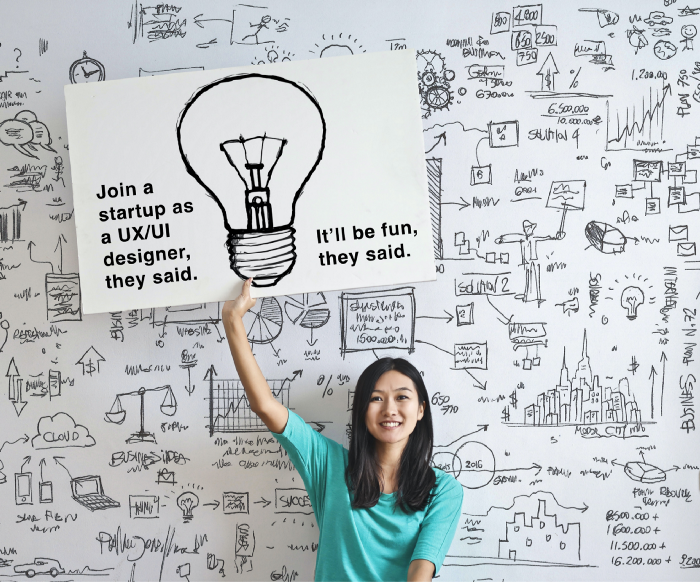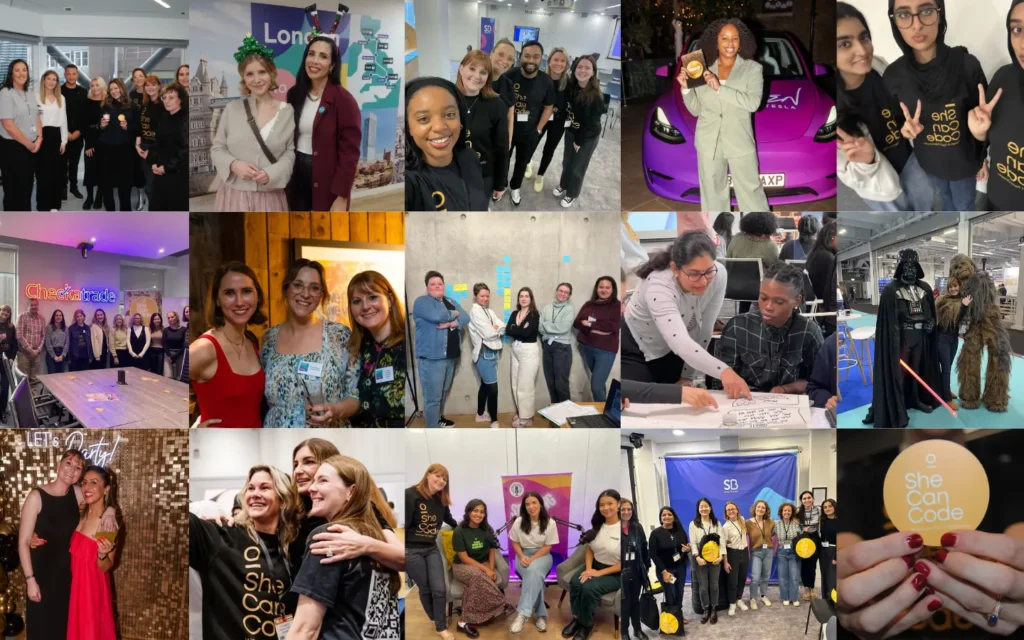When I was starting out, one of the best experiences that I had was when I joined a startup company as a UX/UI Designer.
Sure, working in a startup environment sounds fun. The stories of flexibility and freedom that it entails spark curiosity into people’s minds, making it enticing to explore a career in the startup scene. In reality, working in a startup just presents a different set of challenges. One of which requires you to wear a lot of hats as the only designer in the team.
I wouldn’t exactly say that working in a startup was fun. What makes things fun is a subjective matter, some people find a day at an amusement park fun, while some find it dreadful. From what I experienced, there were fun times and it surely was a roller coaster ride. I’m glad that I was able to be a part of something real and I was able to meet good people.
Here are some of my learnings and unlearnings as a UX/UI Designer, after working in a small startup company, as a full-timer with 4–5 people teammates:
The Solo UX/UI Designer
Designing for the User.
Being the only designer in the team has its pros and cons. It might seem that faster design decisions could be made because there is only one designer. However, this meant that there were no other designers to discuss or to bounce off ideas with.
It was common to hear something like, “You are the designer; you know what’s best.” To some extent, you would be entrusted to make the call and this is a good opportunity to owning up to your decisions and to learn from them. However, it’s inevitable for us to sometimes believe that our users would think and behave exactly like us. In any case, always remember that you are not the user.
Raluca Budiu from Nielsen Norman Group writes, “Designers, developers, and even UX researchers fall prey to the false-consensus effect, projecting their behaviors and reactions onto users.”
Design is a team sport and it’s easy to forget that we tend to have our own biases. Hence, I initiated brainstorm sessions, discussions and even have healthy debates with my teammates. I had to constantly refrain from designing only for myself. When in doubt, test with users.
Perfect Design
Letting go of attachments and making things happen.
Some design-related discussions with a team could easily wind up into heated debates. That’s what happens when everyone cares about what they do, and everyone is passionate with what they believe in. People are good at generating ideas and it’s quite normal to fall in love with an idea. However, it’s risky to get fixated with one idea, especially when it leads to a dead-end.
“While there is good design, there is no perfect design.” – Alexandra Daisy
Getting fixated with “The perfect solution” reduces the chances of getting better ones. As a designer, we get to explore ideas. Exploration may require some allocation of time and resources, it could initially seem costly for a startup company. However, there is more to gain from iterating ideas and being agile than getting trapped in a box of restrictions. Eventually, iterations would lead to the correct answers.
“It’s not about an idea, it’s about making an idea happen.” – Scott Belsky
Learning to let go is also a sign that we are capable of quieting our own egos and listening to others. As much as we care to get our ideas out, we could also choose to listen to each other in order to move forward toward a common goal.
Best Practices
Following best design practices might lead to good design, but not always.
As a designer with limited resources, checking out design trends and following best practices could help manage getting things done. Producing a prototype that is consistent with other interfaces could make it easy for people to use, but once in a while, it doesn’t work out. This has been one of the usual dilemma that I struggle with.
So yes, we have to be mindful of being consistent with the design conventions that people are used to. It has been found that the more a person performs the same task, the lesser time it takes for them to complete. But depending on who your target users are, it’s possible that design conventions could only be easy to use if users became familiar with it before. This is why it’s always helpful to also learn more about the users and find out whether they have encountered the design that you are going for.
Our job is to make things easier for people to do their tasks, not only for us to finish our tasks and release the app. Hence, reaching out to users would help us to learn about their previous experiences. We can then navigate our way to the best design approach.
Jumping into solutions
Frame the right problem in order to explore and find the right solution.
When working in a startup company that puts importance on being lean and agile, I have realized the need to be concerned with how I spend my time to complete my tasks and to make sure that I’m working in collaboration with my teammates to move a project toward completion. However, it’s quite crucial to pin down what the actual problem is before thinking of solutions, than to nail down a prospective solution and applying it blindly.
Don Norman said in an interview that, “One of the important skills a good designer brings to the table is figuring out what the real problem is.”
Solving the wrong problem could be costly for a startup and even be a turning point for a company. Don also suggests, “asking why 5 times to find the real problem”. I have learned to adopt a Design Thinking mindset in order to frame the real problem. By emphatizing with the users through user research, we could focus on finding the pain points that will help define what the user needs are.

Buy-in for UX
Accept that it always be an uphill battle.
Like in any workplace, design maturity varies. The Nielsen Norman Group defined 8 stages of Corporate UX Maturity. In my experience, the daily hustle and grind in a startup environment does not necessarily equate or lead to its design maturity. And that’s ok, we work with what we have.
I have worked in an environment where the maturity is more or less 2–4 stages, where UX is somewhat being recognized, with some time and budget allocated for UX activities. It could be hard to ask for more chances to do activities like usability testing, specially when you are caught up with other design-related tasks. I may have not known any better in my earlier days, but “any user data is better than no data.”
Doing something blindly is a dangerous habit and a risk that the team might not realize before it’s too late. Startup teams work hard to push out a project or a product, previous experiences made me learn that data-driven design with qualitative inputs helps in gaining credibility and buy-in for UX. Solving real problems and identifying usability issues has helped me emphasize the need for better user experience, which eventually helped justify the need to invest in UX activities like user research.
Feedback
Ask and give feedback.
I have worked in a startup environment with a culture of directness and I got used to it. While I learned how to handle criticisms early on, my worst nightmare back then was not being good enough. I also had a difficulty in gauging whether I did a good job or not. Not being good enough still bothers me from time to time, but it’s not enough reason to not ask for feedback or to stop. Because I was the solo designer in a startup company, it was crucial for me to reach out to my teammates so that we could evaluate my design or idea. We could then iterate and move forward.
I recently learned that when asking for feedback, it’s better to ask with a specific context than asking if my work is good or not. When giving feedback, it’s not enough to say things like, “I like it.” or “It’s good.” Instead, be specific and ask questions to understand the underlying design decisions. Ask the stupid questions to lead the problem into the right direction or answer.
Always be learning
Invest in yourself.
I am not an avid book reader and so I find other ways to learn more. Aside from reading online resources, I also enrolled in online courses (e.g. Coursera, Udacity, or edX).
Working in a startup could mean that you need to shell out your own money or be resourceful to join paid events or trainings. I joined non-design related meetups and conferences like RISE and other open source conferences in Hong Kong. It’s a great way to meet people and prospective clients. You never know what opportunities lie ahead.
Surviving the startup hustle & grind
There might be days when you find yourself being spread too thin between different tasks. Hence, it’s helpful to develop a means to plan and spend your time wisely. This is also why it’s crucial to be always mindful of moving forward. Reach out to your team mates, collaborate and build trust.
I found that miscommunications could easily take place, even in a small team, this is why it’s important to be in the same page with your teammates.
While we strive to get things done, I learned that my priority as a designer is to ensure that my design accommodates user needs. Which is why it’s quite necessary to explore the possibilities that could solve the right problem at hand. Asking the right questions would eventually lead you to the right answers.
Be your authentic self. It’s okay stand out and be different. Compete with yourself than with others. Don Norman shares his views on products that all look the same, “Don’t feature match. Don’t design match. It’s about your company, not about your competitors.“
Make it a habit to make plans, think of where you want to be, you can figure out how as you go. Always remember that you are enough.








